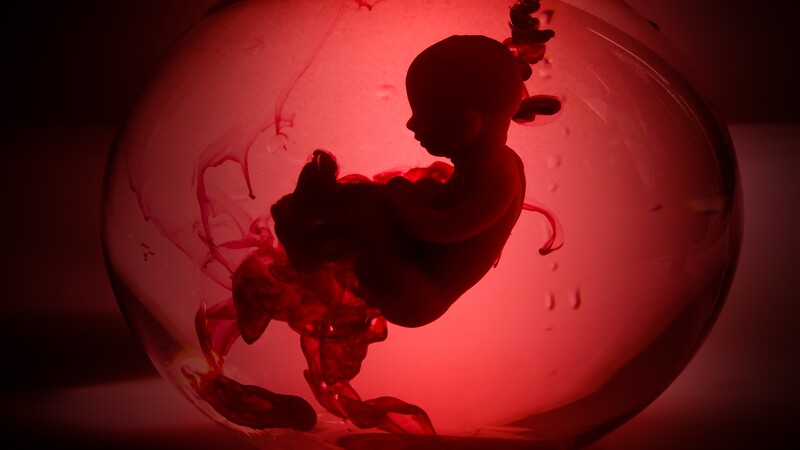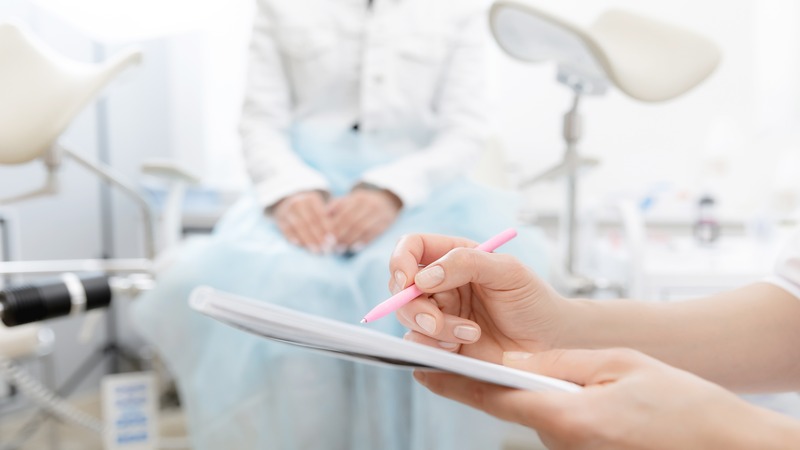
Miscarriage or abortion is the loss or termination of the pregnancy before 20 weeks of gestation. The miscarriage means to miscarry the products of conception. Around 10 to 15 % of all the pregnancies ends up in miscarriage , sometimes it remains unexplained. (1)
When we talk about the induced abortion it can be done for multiple reasons. An abortion can be induced due to maternal wish, abnormal fetus, fetus causing harm in mother’s health. But in this recent era abortion can be done safely without causing harm to the mother’s health. (2)
What Is Induced Abortion?
The word “Induced Abortion” itself connotes something negative and undoubtedly it is less likely to be a good option, until and unless you are suffering from a deadly disease and it is the “Only” option you have.
Abortion is basically defined as the killing of another human being at a very early stage of his existence – ranging from the time of conception to birth. This is not synonym for any causality arising from medical treatments to save a woman’s life, but refers to killing an unborn baby by targeting his life.
Unfortunately, most of us are more or less aware of it, but still abortions happen – voluntarily and forcefully all over the world. In this article, you will come to know about some of the most negative effects of abortion that affect a woman, physically, emotionally as well as socially.
Types of Induced Abortion

Induced abortion is the abortion in which is induced with some medicine or by surgery to evacuate the products of conception. They are (3)
- Medical abortion – which can be done by misoprostol, prostglandin
- Surgical abortion- dilatation and evacuation, vacuum aspiration.
Complication And Side Effects Of Induced Abortion
Though in recent times abortion both spontaneous and induced are safe for the mother but there are still some side effects which can harm the mothe’s life. They are (4)
- Bleeding- which can be heavy and if not controlled it can endanger the life of the mother.
- Pain and cramps- this can be there if the abortion is done medically. Surgically induced abortion doesnot cause pain and cramps.
- Nausea, vomiting, diarhhoea
- Breast soreness
- Vaginal discharge
- Fever and chills
- Uterine perforation
- Fatigue
Consequences Of Induced Abortion

Induced abortion does not necessarily affect a woman immediately, though it poses a danger to the reproductive organs of a woman. Some affects become visible after a long time, since any kind of abortion is essentially against a woman’s inherent motherly instincts. Even if opted for willingly, most women suffer from some degree of physical and emotional effects as a result of induced abortion (5).
Physical Effects Of Induced Abortion
Well, abortion poses both immediate and long term risks. The pointers given below will help you know them (6)
Immediate Physical Risks Of Induced Abortion
- Cervical lacerations and formation of perforations in the uterus are some of the commonly seen complications related to abortion. Generally, induced abortions are done using suction aspiration. Most importantly, the doctor is not able to see what’s going inside. It injures your cervical and uterine walls. In case of future pregnancies, these old injuries might lead to various labour complications and premature births.
- In some cases, although rare, severe instrument related injuries have also been reported that damaged the other organs of the body or the intestines.
- Besides these, infection, profuse bleeding, pain, fever, cervical shock, uterine perforation Hematrometra is some of the immediate ones.
Long-Term Effects of Abortion

- Because of the possible damages caused due to cervical wounds, some women also experience difficulty in conceiving in the future. Some also develop the tendency to miscarriage (7)
- Uterine perforations generally remain undiagnosed and this where the main problem is.
- Placenta previa is another side effect of abortion that puts future pregnancies at risk leading to the death or malformation of the fetus.
Emotional Effects Of Induced Abortion

- Nothing can be more severe than the sense of guilt and regret. Most of the women who undergo abortion procedure go through a mental turmoil that leads them to the verge of depression. And once depression knocks the door, you never know who it has brought along. Yes, alcoholism, addiction, substance abuse and even smoking are some of those negativities that come along with depression. (8)
- As sexual dysfunction is also a side effect of abortion in many cases, women experiencing it also lose interest in their married or sex life. This in turn affects their family life. In some cases, it leads to separation and divorce.
Post-Abortion Syndrome (PAS)
With long lasting and damaging consequences, PAS is the collective result of a woman’s emotions that were not let out during abortion. The horrors, trauma, sense of grief and shock and even the denial of her emotional pain can take a woman to develop PAS which consequently changes her behaviour over a course of time. (9)
Emotional numbness, violence, suicidal tendencies, depression, trauma, guilt, sleeping and eating disorders, and self-depreciating are some of the pronounced behavioural traits observed in such women.
These are some of the negative effects of abortion that agitate a woman from within. As far as social effects are concerned, all these hardships isolate a woman from the crowd and she becomes all alone, in most cases.
Difference Between An “Induced” And A “Spontaneous” Abortion?

Spontaneous abortion is the expulsion of the products of conception on its own without any medication or any external stimuli. Here the woman experience sudden pain , cramps and bleeding per vagina followed by passage of clots and fleshy mass. If the patient is taken to the hospital immediately when she starts pain and bleeding there can be emergency due to profuse bleeding. (10)
Induced abortion is the abortion which happens after taking abortion medications or can also be done surgically by vacuum aspiration or dilatation evacuation. This is comparatively safe since the health care professional is under control of the abortion by the individualised dose of the misoprostol medicine. But in induced abortion it should be done legally and to fill some forms before undergoing abortion and to notify the government about it.
Are All “Elective” And “Therapeutic” Abortions Induced?
Elective and therapeutic abortion are generally induced. This can be done due to –
- Contraception failure
- Abnormality to the fetus
- The fetus can cause harm to the life of the mother
- Unwanted pregnancy
- Genetic abnormality in the fetus
- The financial burden on the family
So, when there is therapeutic or elective abortion is always induced with medicine or surgically. The medicines which are commonly used are mifepristone 200mg followed by after 36 hours misoprostol 200mcg pervaginally or sublingually thrice daily for the next 2 days. Prostaglandin can also be used for medical termination of pregnancy.(11)
If the patient wishes the abortion to be fast and painless then surgically it can be done. Sometimes if the pregnancy is the second trimester then also surgical evacuation of the products of conception is advised.
Abortion In India

According MTP act in 1900s , the legal gestation of abortion was 20 weeks. But now according to new act the legal gestation of abortion is increased to 24 weeks of gestation due to increase in illegal ways of abortion.
Abortions can be done legally upto 24 weeks of gestations not only in India but also in western countries. But if abortion is done in early gestation then most of the complications can be avoided. There are some forms which is to be filled by the hospital authorities which are then submitted to the government for proper identification and cause. These rules are made to ensure that the government has safe abortions and less death of the mother due to blood loss or improper technique of abortion. There are some legal criteria by MTP act the for abortion done due to:
- Failure of contraception and the mother’s wish
- Pregnancy harms the life of the mother
- Abnormality of the fetus
- Pregnancy happened due to some assault
- Financial issues
- Pregnancy results due to rape
Abortion Law in India
The Indian abortion law was last amended in 2002. (source: ) to reduce induced abortion and consequent mortality and sex-selective abortion. The Indian Law permits an adult woman to decide for herself, and is considered legal only till 20 weeks of pregnancy under the below-mentioned reasons:
- Continuation of pregnancy involves a risk to the life of the pregnant woman or of grave injury of physical or mental health, or
- There is a substantial risk that if the child were born, he would suffer from such physical or mental abnormalities as to be seriously handicapped.
Pregnancies due to rape, or in unmarried girls under the age of 18 (with guardian’s consent), also fall into the legal blanket of abortions.
In this article, we have discussed in detail about induced abortion and its consequences and about the abortion laws in India. Having said everything the abortion should be done under the supervision of the health care professional otherwise it can be life threatening. In recent times over-the-counter abortion medication is available but it should be done under safe guidance so that it does not harm future pregnancies. It is safely done in every hospital, nursing home, and even government hospital.
FAQ’s
1. Do Abortions Hurt?
Abortion per se does not hurt a lot. But there will some amount of pain which is caused by the cramps and bleeding that occur to have an abortion. The pain is similar to that of the menstrual cramps that every woman experiences.
2. What To Do After An Abortion?
If an abortion occurs a couple should not try for pregnancy for the next 3 months. The woman’s body needs to recover from the abortion due to bleeding, pain, and loss of nutrients from the body. Immediate post-abortion there will be some amount of bleeding per vagina which will be recovered within a week. The woman needs emotional support from her partner and the family.
3. Is Conceiving Difficult After Induced Abortion?
There is generally no consensus showing that a woman would not be able to conceive post-induced abortion. But if there is a need to do surgical evacuation of products of conception then there can be a problem of getting the next menstrual cycle. This is due to the curettage done during the procedure, this condition is known as Asherman’s syndrome. This can cause difficulty in getting pregnant.
Reference
- Stubblefield, Phillip G. MD; Carr-Ellis, Sacheen MD; Borgatta, Lynn MD, MPH. Methods for Induced Abortion. Obstetrics & Gynecology 104(1):p 174-185, July 2004 – https://journals.lww.com/greenjournal/abstract/2004/07000/methods_for_induced_abortion.27.aspx#:
- ESHRE Capri Workshop Group, Induced abortion, Human Reproduction, Volume 32, Issue 6, June 2017, Pages 1160–1169 – https://academic.oup.com/humrep/article/32/6/1160/3572417#:
- Hogue CJ, Cates W Jr, Tietze C. The effects of induced abortion on subsequent reproduction. Epidemiol Rev. 1982;4:66-94 – https://pubmed.ncbi.nlm.nih.gov/6754410/#:
- AnthonyR. Measham, MichaelJ. Rosenberg, AtiqurR. Khan, M. Obaidullah, RogerW. Rochat, Suraiya Jabeen, COMPLICATIONS FROM INDUCED ABORTION IN BANGLADESH RELATED TO TYPES OF PRACTITIONER AND METHODS, AND IMPACT ON MORTALITY, The Lancet, Volume 317, Issue 8213, 1981, Pages 199-202 – https://www.sciencedirect.com/science/article/abs/pii/S0140673681900702#:
- Pourreza A, Batebi A. Psychological Consequences of Abortion among the Post Abortion Care Seeking Women in Tehran. Iran J Psychiatry. 2011 – https://www.ncbi.nlm.nih.gov/pmc/articles/PMC3395931/
- de Almeida, N., Teixeira, A., Capoco Sachiteque, A., Molina, J. R., dos Prazeres Tavares, H., & Ramalho, C (2019). Characterisation of induced abortion and consequences to women’s health at Hospital Central do Huambo – Angola. Journal of Obstetrics and Gynaecology –https://www.tandfonline.com/doi/abs/10.1080/01443615.2019.1635096#:
- Ministry of Health and Welfare, Minister’s Secretariat. Statistics Information Bereau, Maternal body protection statistics reports. Tokyo: Health and Welfare Statistics Association, 2002. – https://www.jstage.jst.go.jp/article/ehpm/10/1/10_1_9/_article/-char/ja/#:
- Oyefabi, Adegboyega Omoniyi; Nmadu, Awawu G.; Yusuf, Muhammed S.1. Prevalence, perceptions, consequences, and determinants of induced abortion among students of the Kaduna State University, Northwestern Nigeria – https://journals.lww.com/jomt/fulltext/2016/18020/prevalence,_perceptions,_consequences,_and.6.aspx#:
- Azar Ranji, MS, Islamic Azad University, Urmia Branch, Urmia, Iran. – https://onlinelibrary.wiley.com/doi/abs/10.1111/j.1542-2011.2012.00159.x#:
- Journal of Obstetrics and Gynaecology Canada Volume 31, Issue 12, December 2009, Pages 1149-1158 – https://www.sciencedirect.com/science/article/abs/pii/S1701216316343766#:
- ESHRE Capri Workshop Group, Induced abortion, Human Reproduction, Volume 32, Issue 6, June 2017, Pages 1160–1169 – https://academic.oup.com/humrep/article/32/6/1160/3572417#:

